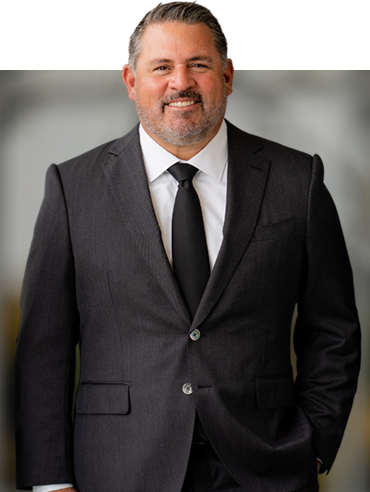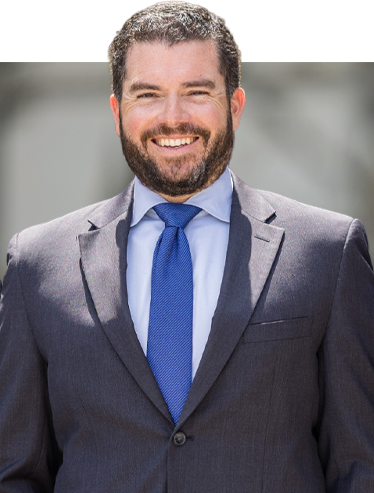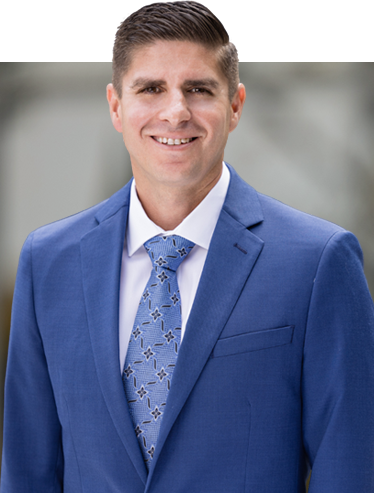Riverside Bicycle Accident Lawyer
Bicycle Accident Lawyer In Riverside, CA
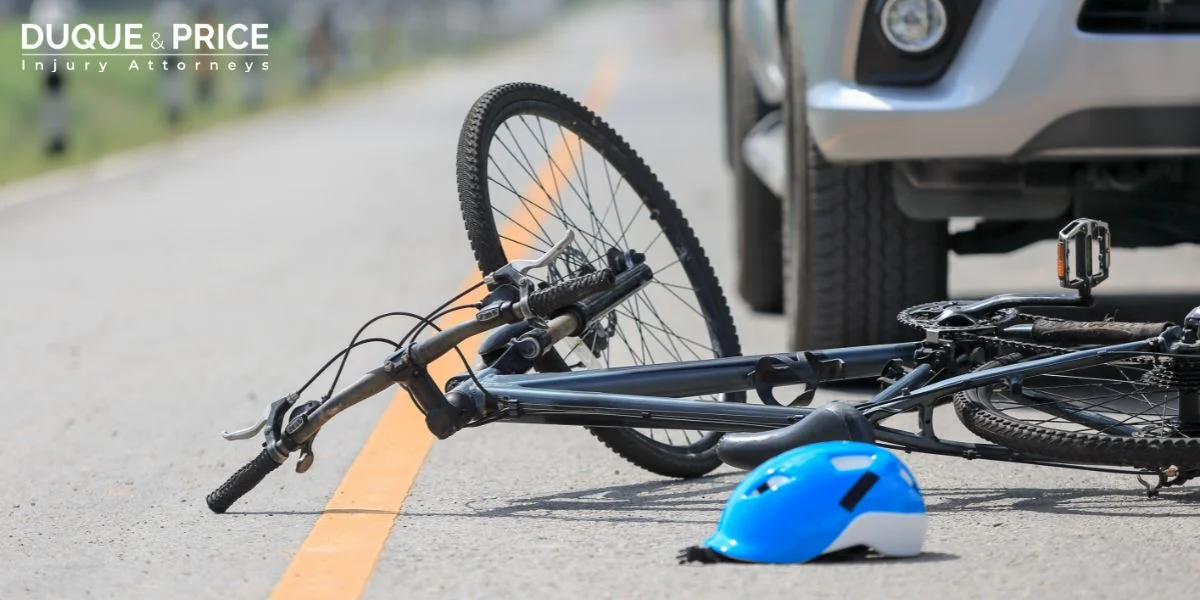
Bicyclists can find paradise in Riverside and the surrounding areas, with its beautiful roads, ideal climate, and usually bike-friendly environment. However, as the number of cyclists on the roadways has increased, so too have bicycle accidents. A Riverside bicycle accident lawyer can help you understand the legal ramifications of bicycle accidents, including their types, the common causes, and what to do if you get into one.
Why Choose Duque & Price?
At Duque & Price, our experienced Riverside personal injury attorneys are advocates who put up endless effort to make sure that our clients can obtain the highest possible compensation. Our client-focused strategy, which comprises taking the time to hear your story, comprehend your goals, and modify our legal tactics accordingly, demonstrates our commitment to quality.
With our great reputation and case record, we offer the peace and confidence that come with having an accomplished and trusted legal team on your side. Selecting Duque & Price means choosing a partner who can support you from the first meeting until the issue is resolved.
When you’ve been injured in a bike accident, you need a proven team that blends results-driven advocacy with genuine client care. Duque & Price stands out in Southern California for several key reasons:
Award-Winning Representation – Recognized as a “10 Best Law Firm – Client Satisfaction” by the American Institute of Personal Injury Attorneys (2018), Duque & Price has earned national recognition for putting clients first.
Super Lawyers Honors – Attorney Matthew R. Price has been selected to Super Lawyers (2025–2026) after multiple years on the Rising Stars list (2021–2024). Attorney Jordan H. Davidoff has been honored as a Rising Stars selectee (2021–2025). These designations reflect the firm’s consistent record of excellence.
Community Commitment – Beyond the courtroom, Duque & Price invests in the future of Southern California students through annual Newport-Mesa USD scholarships of up to $5,000, and remains actively engaged with the Newport Beach Chamber of Commerce.
Trusted & Local – With offices in Newport Beach, Riverside, and Los Angeles, the firm has deep roots across Southern California, making them accessible and familiar with local courts, insurers, and communities.
Types of Accidents on Bike
Bicycle accidents can take many different forms, and they frequently involve multiple people and situations. You can identify possible risks and take preventative action if you are aware of the many kinds of bicycle accidents. The following are a few of the most typical varieties of bicycle accidents:
- Vehicle and cyclist collisions. This is the most common kind of bicycle accident, typically happening when a motor vehicle hits a cyclist. A number of factors, including inattentive driving, failing to yield, and inappropriate lane changes, might result in these collisions. Given the size and speed difference between cars and bicycles, the injuries incurred in these collisions can be rather serious.
- Dooring mishaps. When a person inside a parked car opens the door without looking out for passing bikes, it’s known as a “dooring” mishap. Riding near parked cars puts a biker in danger of colliding with the door, which frequently results in significant injuries.
- Accidents at intersections. Bicyclists should use extra caution at intersections because numerous cars may be turning or using the crosswalk. A typical example occurs when a car turns left and misses a bicyclist crossing the intersection, which results in an accident. Furthermore, right-turn collisions happen when a motorist makes a right turn and cuts off a bicyclist, who is riding straight ahead.
- Sideswipe accidents. When a car passes too close to a bicycle, it might graze or push them off the road, resulting in a sideswipe accident. When there is little to no bike lane, bicycles are forced to share the road with cars, which increases the likelihood of these incidents.
- Hit-and-run accidents. When a hit-and-run occurs, the at-fault vehicle leaves the scene without exchanging information or helping the wounded bicyclist. Due to the fact that the injured victim must handle the consequences alone, these accidents are very painful and costly.
- Road hazards. Not every cycling accident occurs with a car. Road hazards like potholes, debris, and bad road conditions can result in single-bike accidents. Occasionally, a cyclist may lose control because of a path barrier or a mechanical issue.
Reasons for Bicycle Accidents In Riverside, CA
There are many different reasons why bicycle accidents happen, most of which are avoidable. Both drivers and bikers in Riverside, CA can lower the likelihood of accidents by taking preventative measures after becoming aware of these causes.
- Driving while distracted. In California, one of the main reasons for bicycle accidents is distracted driving. Bicyclists may go unnoticed by drivers who are texting, talking on the phone, or otherwise distracted from the road, which can result in crashes. Similar to distracted drivers, inattentive bikers run the risk of colliding with objects or people.
- Failing to yield. When a driver doesn’t give the right of way to a bike, it frequently results in bicycle accidents. This may occur when turning, at crosswalks, and at intersections. Bicyclists are entitled to yield to vehicles in California, particularly in bike lanes and crosswalks.
- Speeding. Cycling and driving at high speeds can both slow down reaction times, which makes it harder to prevent accidents. High-speed collisions frequently result in more serious injuries or fatalities.
- Driving while intoxicated. Drunk or drugged drivers are a big contributor to all types of accidents, including bicycle-related ones. Impaired drivers are more likely to crash into bicycles because they have slower reaction times and lowered inhibitions.
- Traffic risks. Potholes, uneven pavement, and debris can all contribute to poor road conditions, which can throw cyclists off-balance and into collisions. Road hazards may occasionally result in accidents, for which the local government or other entity in charge of maintaining the road is held accountable.
- Weather conditions. Unfavorable weather, such as rain or fog, can make it harder to see others on the road and increase the chance of bicycle accidents. In bad weather, drivers and cyclists should both drive and ride with additional caution.
- Poor infrastructure. Accident risk is increased when there is inadequate infrastructure for bicycling, such as bike lanes, traffic lights, and signage. Bicyclists are obliged to share the road with cars in locations lacking dedicated bike lanes, which increases the risk of crashes.
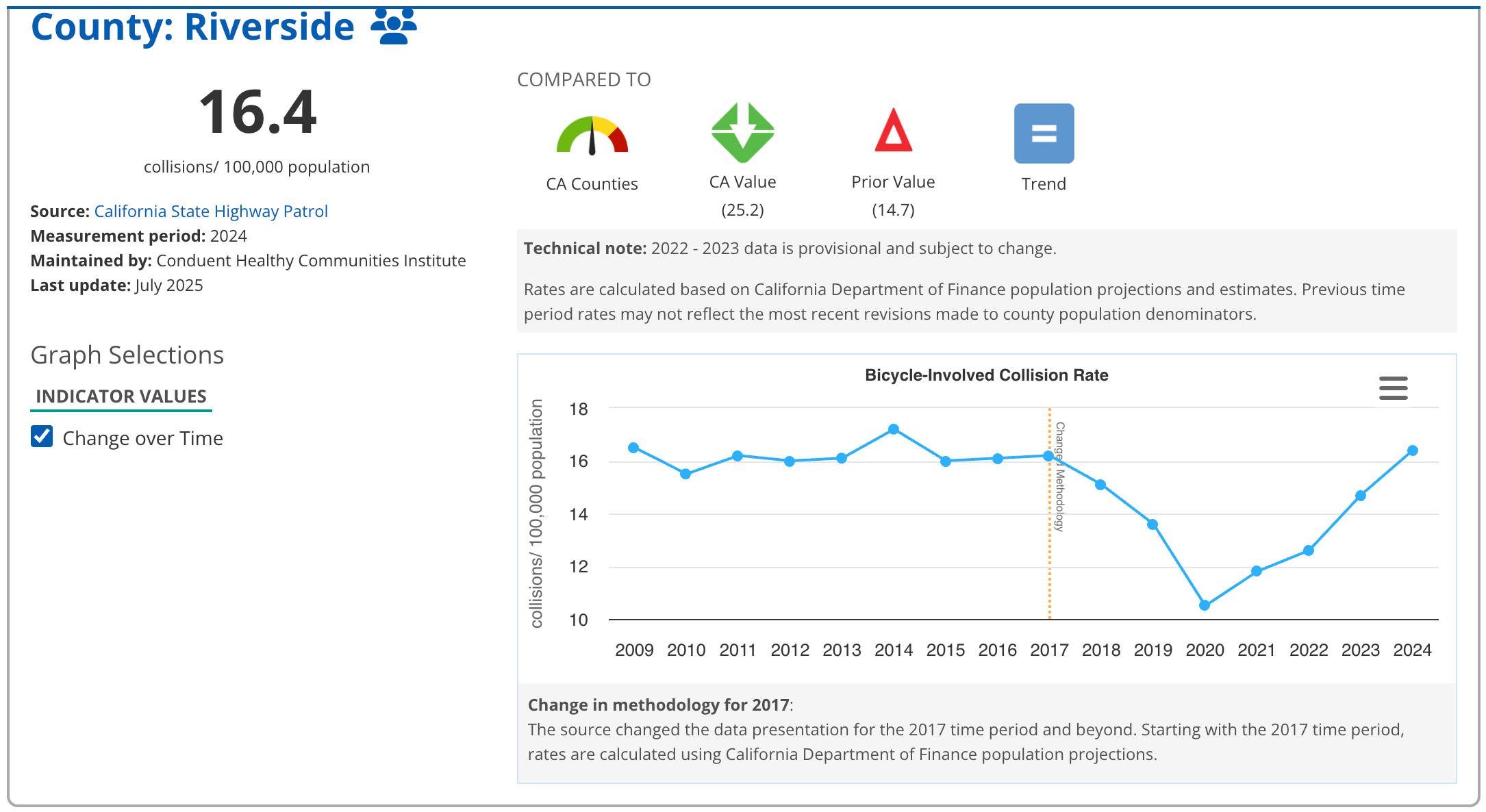
Source: shaperivco.org
How to Handle a Bike Accident In Riverside
Knowing what to do in the event of a bicycle accident can help you preserve your rights and increase the likelihood that you might be fairly compensated for your losses and injuries. After an accident, you should perform the following right away:
- Make sure everyone is safe, and get medical help. Following an accident, your safety should come first. If you can, move to a secure area while you evaluate your injuries. It’s important to get medical help, even if you feel okay, because some injuries might not show up right away. Additionally, a medical evaluation documents your injuries, which is crucial for any future legal claims.
- Speak with the police. Inform the police about the collision, particularly if someone is hurt or there is substantial property damage. An official report from the police might be very helpful evidence in your case. Make sure you give the officers precise, in-depth information.
- Collect proof. At the accident scene, gather as much evidence as you can. Take pictures of the surrounding area, your bicycle, the involved vehicle, and any visible injuries. Request the statements and contact details of any witnesses, if there are any.
- Exchange information. Give the other driver involved in the collision your contact and insurance information, and obtain theirs. If the driver refuses to cooperate or drives off, try to get the make, model, and license plate number of the car.
- Do not accept responsibility on site. It’s crucial to avoid making any remarks that can be read as an admission of guilt or admitting responsibility. It’s possible that the accident had more causes than one, and anything you say at the scene could be detrimental later.
- Speak with a Riverside bicycle accident lawyer. It is imperative that you speak with a skilled Riverside bike accident lawyer following a bicycle accident. A lawyer can guide you through the legal system, assist you in understanding your rights, and help you bargain with insurance companies to get the money you are entitled to.
FAQs About Riverside Bicycle Accident Law
Who Is Usually at Fault If a Bicycle Is Involved in an Accident in Riverside?
The person who is at fault in a bicycle crash depends on what happened. It could be the driver if they were not paying attention, were going too fast, or failed to stop. If the cyclist broke traffic rules, like going through a red light or riding against the flow of traffic, they could be at fault. To figure out who is at fault, police records, traffic cameras, and witness statements are often looked at.
Is it Worth it to Hire a Riverside Bicycle Accident Attorney?
It is worth hiring a Riverside bicycle accident attorney because they handle insurance negotiations, prove liability, and pursue maximum compensation for medical bills, lost wages, and pain. Attorneys also protect victims from insurer tactics that reduce payouts and improve the chances of a favorable settlement or trial outcome.
How Much Do Accident Attorneys Charge in California?
A lot of California personal injury lawyers only get paid if you win your case. This is called a contingency fee basis. Suppose that your lawyer’s contingency fee is 33%. This means that they will take 33% of any money you win. This number could be different based on what you and your lawyer agree on, how hard the case is, and what stage it is in.
How Do You Get Money From a Bike Accident in Riverside, CA?
You get money from a bike accident in Riverside, CA by filing an insurance claim or lawsuit against the at-fault driver. Compensation covers medical expenses, lost income, property damage, and pain. Collect evidence, seek medical care, and consult an attorney to strengthen your claim and maximize financial recovery.
What Is the First Aid Treatment for a Bike Accident?
When someone is hurt on a bike, first aid includes checking for major injuries, like broken bones or head trauma. As long as the person is awake, tell them to stay still. Put pressure on cuts with a clean cloth to stop the bleeding, and cover any scrapes to keep them from getting infected. If moving the injured person could hurt their back, don’t do it. If someone is seriously hurt, call 911 right away.
Can I Claim If I Get Knocked Off My Bike in Riverside?
If someone else’s carelessness causes them to knock you off your bike, you can file a claim for money. This could pay for hospital bills, lost wages, damage to property, and pain and suffering. To make your case stronger, get proof, like photographs, medical records, and statements from witnesses. Then, talk to a lawyer who can help you through the legal process.
Contact Duque & Price’s Riverside Bike Accident Lawyer Today
If you have been injured in a bicycle accident, an attorney at Duque & Price can help you navigate your next steps. Contact us today to get started.
Proudly Serving Riverside, CA, and Nearby Areas
Riverside, CA, located in the vibrant Inland Empire, shares its borders with cities such as Moreno Valley, Corona, Redlands, and San Bernardino. The area’s rich history and economic vitality make it a unique place to live and work. Riverside County, California, has seen a concerning trend in bicycle-related accidents.
In 2024, the county reported a bicycle-involved collision rate of 16.4 per 100,000 residents, which is lower than the California average of 25.2 but still indicates a significant number of incidents. Our personal injury attorneys are honored to serve clients in Riverside and the surrounding communities, providing compassionate and effective legal representation.
Meet Our Riverside Bicycle Accident Attorneys
|
|
|
Client Testimonial
⭐⭐⭐⭐⭐ “This is the second time I have used Duque & Price and I am very grateful for them. They are very helpful, made everything easy, and keeping you in the loop with amazing communication. I appreciate Charlotte and everyone at the office that helped me with both of my cases.” – Britany Pierce
Read Melissa M.‘s review of Duque & Price on Yelp
Amber Voitenko-Ammerman
recommends Duque & Price.
⭐⭐⭐⭐⭐ “Duque law is a trustworthy law firm. They are so helpful and have you in mind to help you when you have been involved in a car accident. There are so many things to handle and they help step in so you can relax and get what you need. Thank you Duque & Price for all you do.”
Duque & Price – Riverside Office, CA Office
Request A
Free Consultation
Fields Marked With An ” *” Are Required

